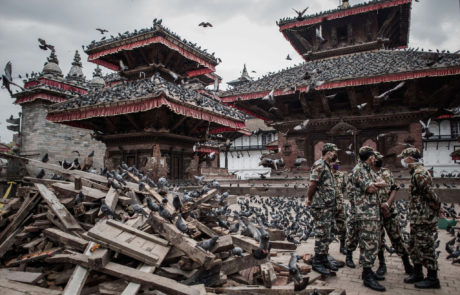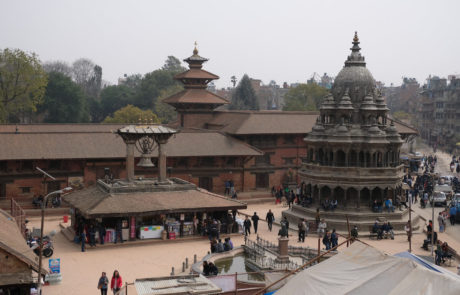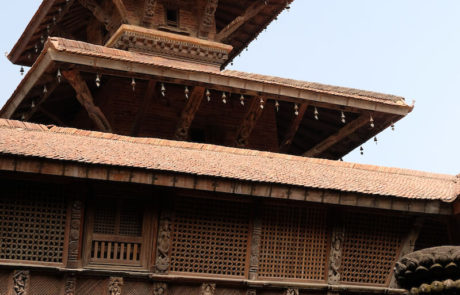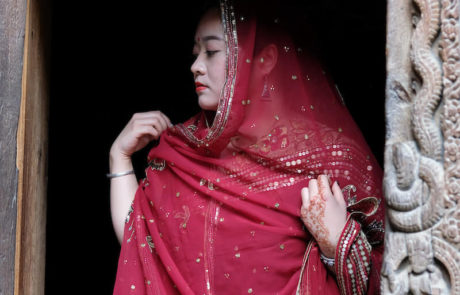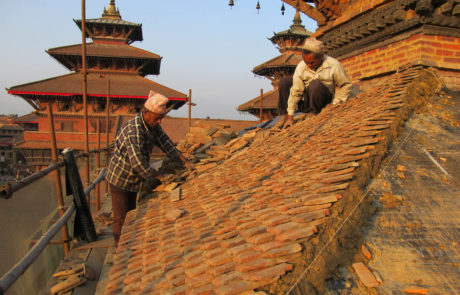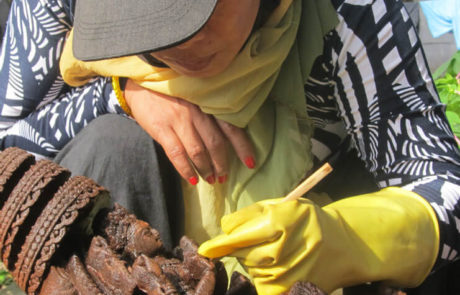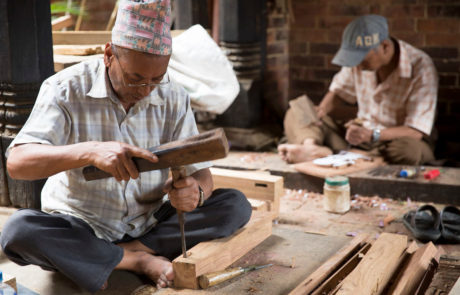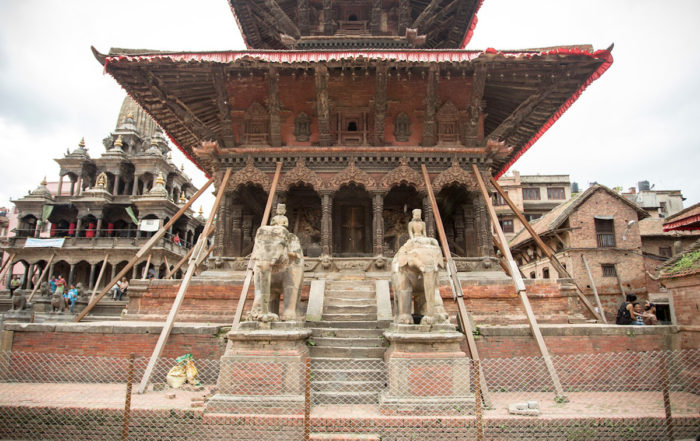Patan Durbar, Nepal
Seven distinct Buddhist and Hindu monuments, palace complexes, temples and stupas dating between 1500 and 1800 A.D. dapple the culture-rich Kathmandu Valley, forming a single UNESCO World Heritage Site. Yet modern day Nepal was already one of the world’s poorest countries when a 7.8 magnitude earthquake struck at 11:56 a.m. on April 25, 2015, killing 9,000 people and destroying some 753 heritage sites across the Himalayan nation. “The gods have no home,” reported one Kathmandu newspaper in the aftermath.
To address these challenges, Global Heritage Fund partnered with the Kathmandu Valley Preservation Trust, the only international private non-profit dedicated to safeguarding Nepal’s architectural heritage. We provided funding and technical expertise for the seismic retrofitting and restoration of Vishveshvara Temple. Built in 1627 and dedicated to Shiva, the Lord of the Universe, the Hindu temple sits on Patan Durbar Square, considered Nepal’s most important cultural attraction and one of the finest historic urban ensembles in South Asia.
Known for its elegant woodcarvings and complex structural design, Vishveshvara Temple served as a vital community hub prior to the devastating quake and the residents of Patan, a once royal city across the Bagmati River from Kathmandu, played an active role in its reconstruction. Community first responders immediately rallied together to salvage as much as possible, relocating temple fragments to a safe location for future evaluation. This rapid, methodical response significantly aided our rebuilding efforts.
The Trust’s Nepal Program Director, conservation architect Rohit Ranjitkar deliberately erected an open fence around the restoration area to engage locals in the process. This proved pivotal in resolving a culturally sensitive issue at the heart of this restoration. Traditionally, Hindu temples are built entirely with new materials, and there exists deep-rooted disapproval of reusing old elements. Building anew in the original material, teakwood was unfeasible and would exclude any authentic historic fragments, yet disregarding this concern could have irreparably damaged the historic and religious ties between the site and community. Ranjitkar led efforts to reach an understanding so that the original materials could be reused. His sensitivity and cultural inclusion embodies the importance of involving communities in heritage projects.
“We need to preserve what our ancestors left for us and for those who come after us,” said the highly respected Nepalese writer Kanak Mani Dixit of restoration works in Patan Durbar Square. Preservation, he argued, provides vital continuity not only in the reconstructed buildings and requisite artisanal skills, but also by ensuring the continuation of festivals and traditions, “that give meaning to Nepali lives.”
Some images courtesy of Kathmandu Valley Preservation Trust




